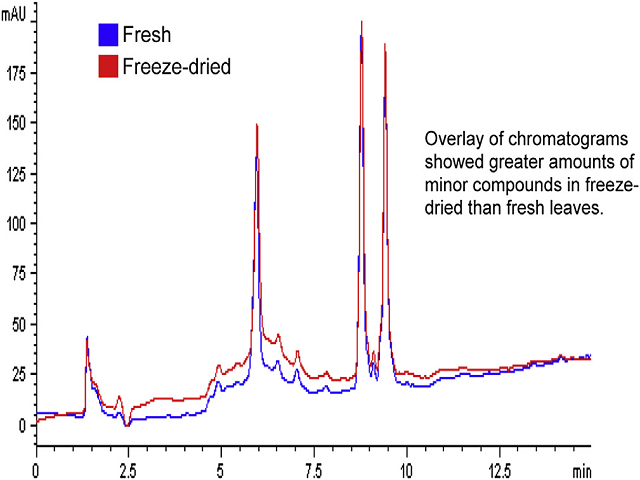Antioxidant properties of herbs with enhancement effects of drying treatments: A synopsis
Keywords:
Herbs , Fresh and dried , Phenolic content , Antioxidant activity , EnhancementAbstract
Our recent work on the antioxidant properties (AOP) of herbs showed that three species (Etlingera elatior, Morus alba, and Thunbergia laurifolia) displayed enhancement effects of microwave-, oven-, and freezedrying. AOP analysed were total phenolic content (TPC), ascorbic acid equivalent antioxidant capacity (AEAC), ferric reducing power (FRP), and chelating efficiency concentration (CEC50). Microwave- and oven-drying led to drastic decline in AOP but freeze-drying resulted in significantly increase for leaves of E. elatior. Leaves of M. alba responded positively to all three drying treatments. TPC and FRP following oven-drying remained unchanged but AEAC and CEC50 increased by 27% and 22%, respectively. Freezedrying resulted in increase in TPC (16%), AEAC (26%), FRP (20%), and CEC50 (44%). Microwave-drying increased TPC, AEAC, and FRP by 24%, 91%, and 30%, respectively. Microwave-drying enhanced AOP of T. laurifolia leaves. TPC and AEAC increased by 34% and 67%, respectively. Results indicated that different drying treatments have variable effects on AOP of herbs. Effects include little or no change, significant losses or enhancement in phenolic content and antioxidant activity. Decline in AOP following drying treatments has been attributed to thermal degradation of phytochemicals, enzymatic degradation of phenolic compounds and loss of antioxidant enzyme activities. Reasons for the increase in AOP following drying treatments include the release of bound phenolic compounds by the breakdown of cellular constituents and the formation of new compounds with enhanced antioxidant properties.
Downloads
Metrics





